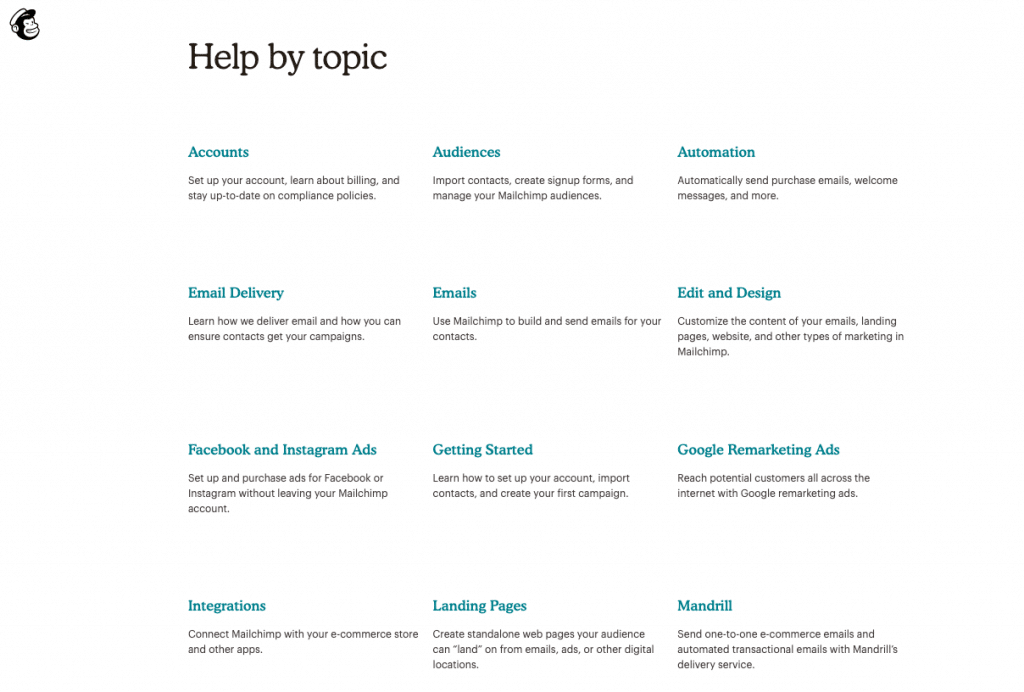Customer support is one of the biggest factors that can impact your business’ success.
Good support can make you; poor support can break you.
Hey, no customers = no money, right?
Your customer support agents are the face of your company whenever customers need help or encounter problems with your product. Your team’s ability to handle customer questions quickly, whether it’s over the phone or email or social media, can have a huge impact on the rest of your business.
In this post, we’ll look at:
- What is customer support?
- Why is customer support especially important today?
- Top 3 things we need to unlearn about customer support
- 7 essential elements of doing customer support well
First, let’s define a few terms…
⭐️⭐️⭐️⭐️⭐️ Ready to offer 5-star customer service? Get strategies for every stage of the customer journey with this free eBook.
What is customer support?
Generally, customer support is a branch of customer service that’s geared towards helping customers solve any technical problems that come up when they use your product or service, such as not being able to use their e-commerce software effectively or finding surprising pricing issues.
This kind of technical support could involve your call center reps troubleshooting a technical problem with customers over live chat, creating helpful documentation on how to use your product, or passing customer feedback on to product teams to prevent future issues.
Whatever the specific activity is, the overarching aim of customer tech support is to improve the customer experience by making sure customers get quick and accurate answers to product issues when they arise.
Why is customer support especially important today?
Customer support is especially important because it plays a vital role in you being able to deliver a positive customer experience—something that many of your customers may deem to be just as important as the product or service you’re selling.
And in case this isn’t clear: the degree and the quality of customer support you offer directly affects your customers’ perceptions of how well you treat them. You can’t skimp on this!
High-quality support will leave your customers feeling like you’ve got their back, while low-quality support will just leave them feeling let down and frustrated.
If you want to get into the specifics, investing in better customer support can benefit your business in three main ways:
1. Better customer retention
In a world where consumers are free to choose from so many alternatives (hmm… Disney+ or Netflix?), you simply can’t afford to give your customers the impression that you don’t care about their experience of your product.
Why should they stick around when someone else offers them far better support?
Companies not showing that they care is a dealbreaker for most customers—so, how do you keep a high customer retention rate while avoiding losing customers because they think your company didn’t care enough about them?
This should be a key factor in your customer support.
There have been countless studies finding that acquiring a new customer costs you (way) more than keeping your existing customers, so don’t overlook this step.
2. Word-of-mouth
Word of mouth (WOM) affects what people think about your brand more than any other channel. 83% of Americans say word of mouth (from family and friends) makes them more likely to purchase a product or service.
And when it comes to customer experience, happy customers spread the word, especially via social media… but so do unhappy ones.
72% of customers will share a positive experience with six or more people, but 13% of people will tell 15 others to stay away if they’ve had a bad one. The rest just leave—never to return.
Great customer support agents will help turn your customers into evangelists who will sing your company’s praises and keep them from developing into vocal haters.
3. Product development
What better way to build something your customers are willing to pay for than to listen to what they do and don’t like?
Well, your call center support team, and the rest of the customer support crew, have the best seat in the house when it comes to learning about customer issues and needs.
Your product development team can draw upon this never-ending stream of customer insights to hone future innovations and upgrades. Feedback from actual customers will often expose problems and opportunities that your product team would otherwise miss.
Top 3 things we need to unlearn about customer support
Customer support has evolved over the years.
The ’60s brought with it call centers, which gave companies a new, efficient way of dealing with multiple customer inquiries at once.
Then in the ’80s and ’90s, most call centers became outsourced, and customers came to know the pains of being put on hold for hours (did the hold music just loop again?!) only to be disconnected without explanation.
By the time the internet had taken off in the 2000s, customers could begin to publicly air their feelings ranging from ecstatic delight to all-consuming rage and share their questions through online forums, review sites, and social media.
The changing digital landscape also gave companies new ways to build customer relationships. Before long, in addition to phone support, a thriving marketplace of online customer support tools had emerged.
And yet even though customer support, and even automation within the field, has advanced a great deal in recent years, some common beliefs about it remain stuck in the past.
Here are three things we need to unlearn about customer support:
1. Customer support is just another unnecessary expense.
It’s surprising how many businesses are not customer-centric and still view customer support as a hassle. They see their help desk as just another add-on that drains resources and generates zero revenue.
The truth is that killer customer support representatives can give your business a tremendous competitive advantage and differentiate you from other companies in your niche.
And while it’s true that customer support doesn’t generate any direct revenue, the long-term payoffs are big. They range from better customer retention to positive word of mouth and a knowledge of when to improve your Net Promoter Score thanks to in-depth customer feedback. All of that makes the investment more than worth it.
2. Customer support exists in a vacuum.
The more you can share ideas and team knowledge freely with one another, the easier it is for everyone to recognize opportunities to do things better.
We’ve already seen how customer support and product development teams can work together to bring about better results, and the same is true when it comes to collaboration with teams like sales and marketing.
For example, your tech support team might notice that many different customers seem to love a particular feature. This is a good hint for the marketing team that they could do more to highlight it on the product homepage for future customers.
And don’t forget, outsourced and siloed customer support teams sometimes have trouble conveying customer pain points to the rest of the business. This leaves the customers frustrated that the same technical issues keep cropping up and turns the support team into a group of disempowered serial-apologizers.
3. Live customer support agents aren’t needed for most inquiries.
The first port of call for most support-seeking customers is the self-service option— usually an online knowledge base.
People like to solve problems themselves: 67% of customers prefer using self service when it comes to problem-solving over talking to a company rep.
For most issues, it’s just easier and quicker for customers to find their own solution, whether it’s upgrading their account, installing a new feature, or canceling their subscription.
In fact, modern-day customers have come to expect companies to offer self-service. Which means that forcing them to use live chat support to accomplish routine technical problem solving can actually diminish their overall experience. The thing is, they just need both choices.
By providing customers with an easy-to-access and comprehensive self-service option, you free up your support team to prioritize the customer issues that only a real-life person can solve.
7 essential elements of doing customer support well
Building a high-performing customer support team is no easy feat.
It takes time, energy, and sometimes plenty of trial and error to assemble the right group of highly skilled, friendly problem-solvers.
To make sure your team can do the best job possible, it’s important you consider everything else it takes to provide excellent support.
Here are seven essential ingredients that’ll help every customer support agent turn frustrated and confused people into happy customers.
1. Customer support process
An important part of building an effective customer support team is to lay out a solid customer support process. From onboarding new recruits to defining your customer support process—and the principles that underpin it—clear communication will make it easier to align teams (while preventing things from falling into chaos).
Consider putting together a customer support playbook that sets out best practices and protocols for things like:
- Emergencies: What counts as an emergency? Who should be notified and how?
- Escalation: At what stage should a customer issue be escalated to a more superior or specialist team member?
- Communication: How will your support agents share information within and across product teams? What does customer service teamwork look like?
- Feedback: How should a customer support representative record and filter customer feedback? How will that information be used to identify Net Promoter Scores (NPS)?
- Refunds: Under what circumstances should refunds be issued and who should process them?
- Security: How do you protect user data and verify the identity of a customer contact?
- Content: What degree of input should support agents have in creating knowledge base content, such as FAQs and support documentation?
Your customer support process will naturally change shape as you grow and learn from experience, but it’s essential to have some clear guidelines in place from the get-go so that your agents are empowered to make confident decisions.
2. Consistency
Inconsistent messaging across different touchpoints creates a confusing and frustrating customer experience.
This means your customers expect the same degree of service quality and information accuracy at all stages of the customer lifecycle—whether it’s via your helpdesk, email, interacting with your chatbots, or during a sales demo or customer support walkthrough.
Fall short of these expectations, and you might ruin a customer relationship—and lose a customer.
Team communication is the main factor determining your ability to deliver consistent customer experiences. And miscommunication is far less likely when all your teammates have access to the same product and customer information. You need the right communication tools.
For example, a feature like RingCentral Engage Digital’s identity merge automatically draws in customer metrics from different channels like Twitter, Facebook, and email, into a single, centralized profile. This gives you an immediate and accurate overview of a customer’s needs and life cycle—whenever you interact with them:
3. Speed
Speed is another essential metric of great customer support, with 73% of people saying that respecting their time affects the quality of their experience more than anything else.
Of course, speed shouldn’t come at the expense of effectiveness—customers want full resolutions to their issues, not just quick ones. Learn more about first call resolution rates here.
Balancing response times and first-contact resolution ratios is a challenge that faces all customer support teams. But short of just hiring more agents, one way to reduce customer waiting times is to offer them alternative, automated ways of finding solutions (like comprehensive knowledge bases, an FAQ page, or self-help articles and videos).
One company with a first-rate knowledge base is Mailchimp.
Mailchimp’s clean and simple categorization of topics makes it as easy as possible for customers to find the knowledge base article that solves their problem. What’s more, the knowledge base is available in five different languages:

4. Empathy
As opposed to viewing each customer inquiry as just another ticket to close, every customer who reaches out should be treated like a real person with their own unique story and specific set of needs.
Your support agents don’t just have to understand the problem in question; they also need to keep in mind what the problem means to that particular customer.
This kind of empathy exercise helps you build rapport with customers, leaving them with high levels of customer satisfaction and the feeling they are personally supported.
In a now-legendary example of compassionate customer care, seven-year-old Luka from England wrote to Lego to explain how he’d lost his new figurine after it fell out of his pocket.
Lego responded with the following message, and within a week the new figures arrived at Luka’s house:
5. Tone
Another related consideration is deciding the type of tone you’ll adopt when speaking to customers.
Your overall tone should reflect your company voice. Is it relaxed or formal? Conversational or conventionally professional? Do you use emojis or keep it traditional?
Your tone should also reflect the specific needs of the customer situation at hand.
For example, your tone of voice will probably not be cheerful and lively when dealing with an irate customer who wants to cancel their subscription, compared to a customer who just wants some guidance on how to use a new feature.
6. Coverage
When working to deliver the best customer support you can, you’ll need to think about what realistic level of coverage you can achieve.
For example, will your helpdesks be able to provide 24/7 support, or will 9 to 5 on weekdays be enough? Which holidays will your support team observe? Will there be a skeleton team to cover phone calls during these periods?
Need a little help with figuring out how to schedule your coverage? RingCentral Contact Center™ is designed to make that easier for you. Its analytics features can show you when customers are flooding communication lines—and when there are lulls in activity.
Likewise, will you cater to languages other than English?
If you have a wide global customer base, chances are you’ll want to build some capacity to support customers outside of normal office hours and in different languages. If that’s the case, RingCentral’s customer engagement platform can recognize more than 72 languages and automatically assign customer messages to whichever agent speaks the language.
7. The right tools
Let’s face it. Today, it’s pretty hard to meet customers’ needs effectively without a reliable SaaS (software as a service) collaboration hub.
Having the right customer support tools is essential, especially to small teams, because it frees up time and makes things easier for both you and customers.
For example, RingCentral’s omnichannel customer service software features let customers contact your support team through whatever channel they find most convenient, from email to mobile phone support to social media:

Oh, and you can link the whole thing to your CRM system, too. Here’s the Hubspot integration, for example, which automatically shows you every customer’s past interactions with you and profile details when they call or message you:

And don’t forget about internal communications too. Your customer support team might need to talk to Sales about a promo that a customer’s asking about (or Marketing, or Finance… you get it), and they’ll need to get answers quickly.
This is where having a good internal communications tool like the RingCentral app is handy. It make it easy for your support agents to message and call folks, share documents, and collaborate with other team members, all in one place:
Take your customer support team to the next level
Customer support is a key driver of sustainable business growth.
When done right, it reduces churn, increases your CSAT (customer satisfaction) score, encourages word-of-mouth referrals, and offers invaluable insight into your customers’ issues and needs.
But to reap these benefits, you’ll need to do away with any outdated notions of what customer support looks like and make sure your team can act on all the elements necessary to deliver high-quality support.
Originally published Feb 02, 2021, updated Jul 01, 2022







